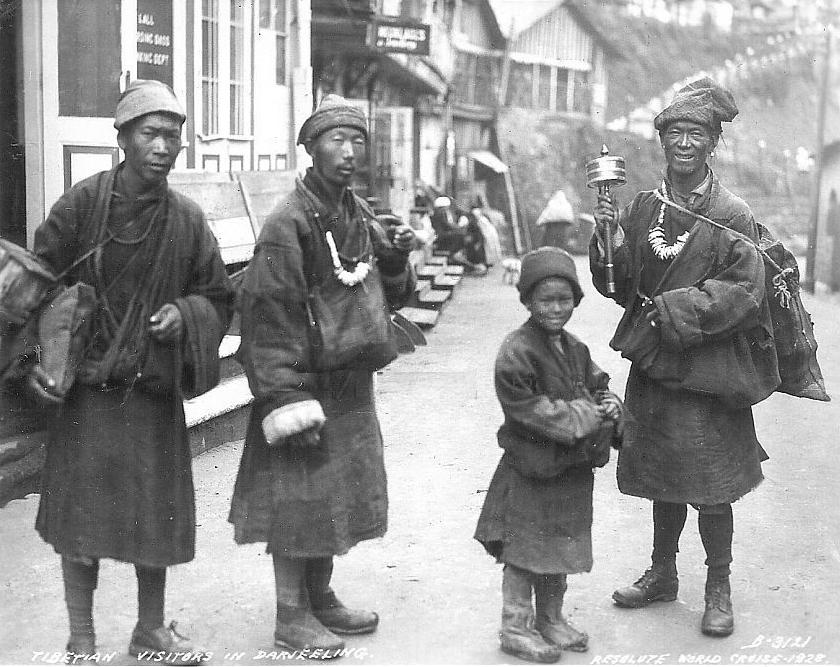
Indian Ethnicity: Tibetians

Figure 1.-- This tourist snapshot was taken in Darjeeling, West Bengal, India. We see three Tibetian men and a boy, probably a family group. They wear typical Tibetian clothing. The man on the right side is holding a Prayer Wheel (mani chos-'khor) in his right hand. This photograph was talen in 1928 , associated ith the 'Resolute' World Cruise. We do not know if the group lived in West Bengal or were travelers from Tibet. The caption says they were Tibetian viiutors, but with alittle boy we wonder just how far they could have traveled.
|
|
Tibet is a huge country in area, but aelatively small population because it is so mounaneous. This and the toweing Himalayas explains why Tibetians have had such a limited demographic impact on India with its huge population. India is separated from Tibet by the Himalayas. And here e have Nepal and Bhutan. In between these two Himalayan kingdoms is a narrow gap. It is occupied by a sliver of West Bengal (an odly shaped state) does touch on Tibet. The major city there is Darjeeling. In this area there is a mix of peoples, inclusing Indian, Nepalese, Buanesem and Tibetians. In Indian terms, the numbers ar fairly small. The largest numbers pf Tibetians in India came after the Chinese Communist invasion of Tibet and the flood of fugees fleeing the Chinese Communist rule. There was no way that traditional elements in China could resist or flee Maoist rule. Tibetan resistance to Chinese Communist rule was possible to a degree because of the vast, rugged landscape. Fighting brokeout, but the small Tibetian population and lack of arms meant that it was one sied. Some 0.1 million Tibetians seeking to preserve their way of life, joined in a mass exodus over the Himalayas to India (March-April 1959). Many of the rfugees died on the difficult trek through the snow-filled passes of the Himalaya. And more were to die in India which was unprepared for the refugees. They died of heat, disease, malnutrition, and as one historin describes it, 'the shock of losing a whole way of life'. Conditions were trrible before international assistance could be organized.
HBC

Navigate the Boys' Historical Clothing Web Site:
[Return to the Main Indoan Mongoloid etnicity page]
[Return to the Main Indian ethnicity page]
[Return to the Main Indian country page]
[Introduction]
[Activities]
[Biographies]
[Chronology]
[Clothing styles]
[Countries]
[Topics]
[Bibliographies]
[Contributions]
[FAQs]
[Glossaries]
[Images]
[Links]
[Registration]
[Tools]
[Boys' Clothing Home]
Created: 2:16 PM 6/10/2017
Last updated: 2:16 PM 6/10/2017



